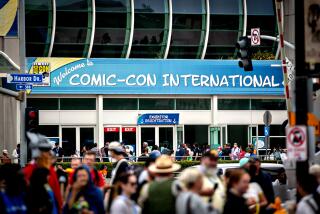A Kingdom of Things : STILL LIFE WITH BRIDLE, <i> By Zbigniew Herbert (Ecco Press: $19.95; 162 pp.) </i>
What is the most specific attribute of a great poet? Legs. There are other things that go into it, of course: a voice that, over the years, becomes his or her own, a transforming imagery, and the recognition that words have three, not two dimensions, and overtones as well as tones. But with all these things and without legs, we have a poet who is, at most, good. By legs, I mean the strength to trudge toward an unknown but necessary destination, and such an urgency for getting there that the reader can follow the urgency if not always the steps.
The legs of Zbigniew Herbert, who may be Poland’s greatest living poet, have always been evident. Born of a cultivated middle-class family, he lived through a deafening clamor of dehumanized public events: first, the Nazi occupation of his country; then, the Stalinist oppression of the postwar Communist regime.
His legs carried him into the anti-Nazi resistance, but fighting is not poetry. In the 1950s, when things eased slightly, he was able to travel. It was an inward journey, of course, but it was also a literal one: westward, to find the roots of the humane culture that the awful events of the 20th Century had cut him off from in his own country. Traveling out, he was an exile coming home.
Years after this journey, in which he all but literally devoured the Middle Ages, the Renaissance and the Enlightenment, town by town, cathedral by cathedral, museum by museum, he wrote a remarkable collection of essays, “Barbarian in the Garden.” The title suggests the voracity and the blinding light with which he explored.
It was not simply travel, it was travel to discover himself and to understand his own lacerated history. He did it by repopulating what he saw. With a poet’s intuition, he meditated on the cavemen in the Lascaux caves, the cathedral masons at Amiens, the great art patrons in Siena, the painters at Orvieto, the barons, heretics, inquisitors and scholars in Provence. He populated these things, he made himself--a shattered modern--one with his population; and by doing so, he brought it all up to us, and made it matter, good news and bad, to our lives now.
“Still Life With a Bridle” is a smaller, quieter book, but it takes part in the same process. What Herbert is visiting and repopulating is more modest and circumscribed, but extraordinary in its own way. His subject is the Netherlands in the 17th Century, its time of greatness.
It was an odd greatness, one that has been remarked over the centuries by Sir William Temple, Henry James, Johannes Huizinga and, most recently, by Simon Schama. With widely varying proportions, all have noted the country’s history--its stubborn battle for freedom, its devout tolerance (sometimes the devoutness overpowered the tolerance), its domestic culture--a comfortable middle ground with a kind of hysteria flickering at the edges.
Some of what Herbert remarks is familiar, but the key to his writing is not so much what he sees as what he needs. A poet transmutes need into vision. What sends Herbert peregrinating through the flat grasslands of Zeeland, the once-sleepy towns that now are sleepy suburbs and, of course, the cities, is a quest for a value he requires.
It is, if you like, Dutch boringness: the fact that despite the struggles against Spain, there is a minimum of martial glory or pageantry, that the paintings could be so filled with furniture, meat and meaty faces, that freedom and tolerance could be pioneered by prosaic burghers. To someone brought up in communism’s barren and dictatorial abstractions, it is liberating to think of freedom, privacy and lots of chairs as something boring.
Herbert knows there is an absurdity in what he is about. You can’t throw yourself into the past traveling in Holland; it is too small, and you’re rarely out of sight of power lines overhead. With mock gravity, he tells us he would have liked to find some place “identical with what was looked at by my collective hero, the Dutch bourgeois of the 17th Century.” Failing that, he turns to mental travel, museums and books.
They give him what he is looking for. Take the local museum at Leiden, the town that saw the most remarkable exploit of the war of independence. For a half-dozen years, the Spanish army besieged it. The Dutch army was inferior; on the other hand, they had a first-rate navy. On still a third hand, Leiden lies inland. The solution was to open the dikes, flood the land and sail the navy in. Imagine the Texas Rangers suddenly being attacked by motor boats.
This, of course, sums up quite a few Dutch qualities, but what interests Herbert most is the Leiden museum’s display. Not armor or weapons or banners, mostly, but an enormous cooking pot that the Spanish left behind. Other provincial museums are filled with clothing, tools, furniture and eyeglasses.
“Holland, the kingdom of things, the great principality of objects,” he writes. “The attachment to things was so great that pictures and portraits of objects were commissioned as if to confirm their existence and preserve their lives.” And paintings had another function: “The artists tried to augment the visible world of their small country and to multiply reality by the thousands, the tens of thousands of canvasses on which they recorded seashores, flood waters, dunes, canals, distant vast horizons and the view of cities.”
Herbert’s essays, followed by a collection of brief vignettes, explore a variety of particulars, any one of which is apt suddenly to flower into a universal. He writes of a well-known and representative painter--Gerard ter Borch--and of Torrentius, a wildly unrepresentative one. Torrentius led such a dissolute and unconventional life that he managed to get himself jailed and tortured on a charge of heresy-- something so unusual that the Royal House tried to intervene, though with limited success.
Herbert sees in him a precursor of a later Bohemia, a mysterious figure of whose work only one painting remains. It is the “Still Life With a Bridle” and somehow, behind the polished surfaces of two beakers and a goblet there is an uncanny power, a dark Dutch id, that made Herbert, he tells us, give “a stifled shout of joy” when he spotted it.
He writes of art prices, carnival freaks, inventors and the tulip craze that produced a wild financial boom--a single bulb could go for as much as a house and garden--followed by a crash. Sometimes there is a forced verbal inflation, like the first line of a poem that doesn’t work out. But Herbert has extracted from this enclosed civilization of things and boring freedoms an exhilarating theme.
There are many ways to be human and each has its own greatness; there is, on the contrary, no way to be great without being human first. And he tells the story of Cornelis Proost, a prosperous draper who lived an appropriately well-stocked existence. On his deathbed, a preacher came to console him with thoughts of a hereafter. But Cornelis:
“Could not understand the Other World at all. The empty blue skies frightened him. Very likely, it was an impious rebellion of the imagination, above all of the pagan senses. He was absolutely unable to understand how one can exist without a house, without creaking stairs and a banister, without curtains and candelabras, also without the cloth that had surrounded him throughout his life. What implacable force takes away from us the coolness of coarse silk, black wool flowing through the hands like a gentle wave, linen recalling the surface of a pond covered with ice, velvet tickling like moss, laces that seemed to whisper women’s secrets?”
More to Read
Sign up for our Book Club newsletter
Get the latest news, events and more from the Los Angeles Times Book Club, and help us get L.A. reading and talking.
You may occasionally receive promotional content from the Los Angeles Times.






